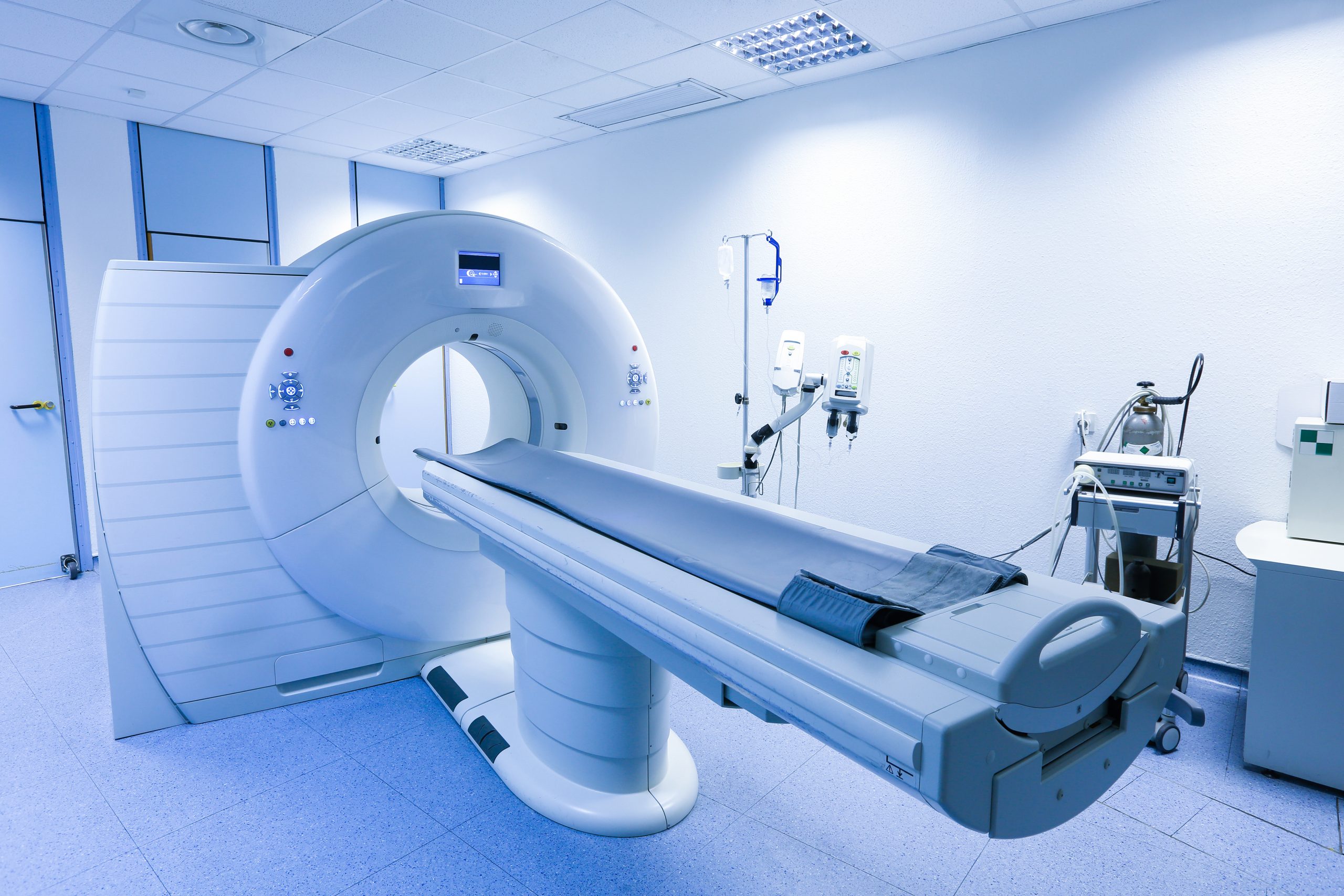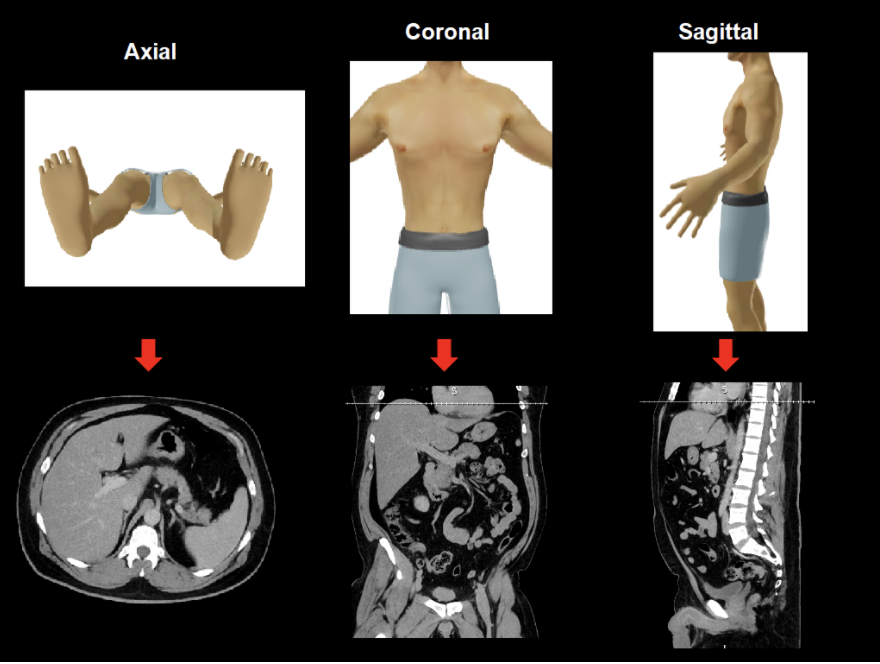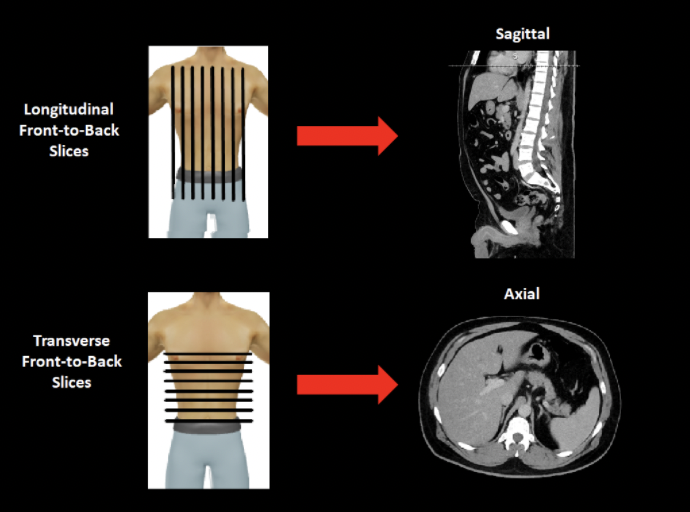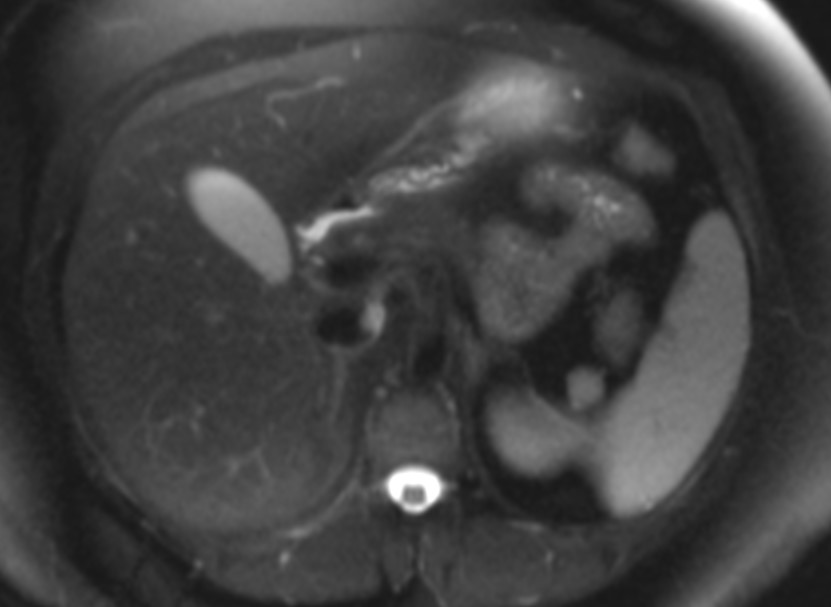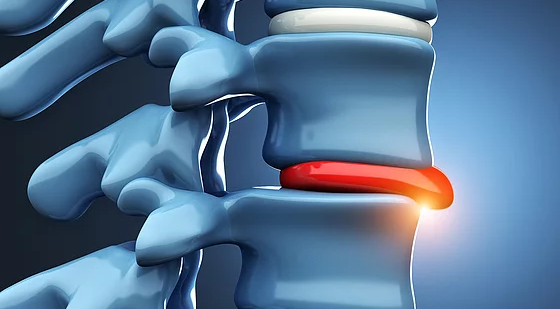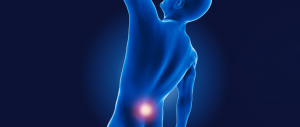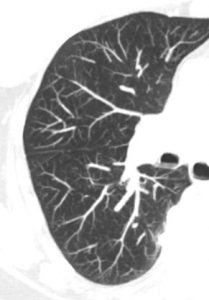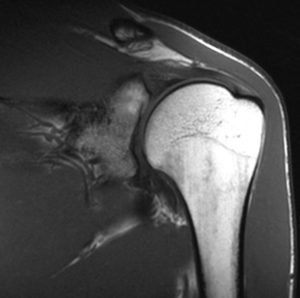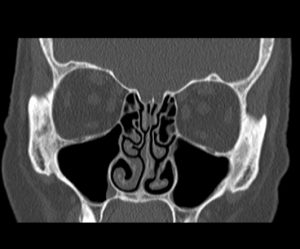As you may know, a CT scan is a method of taking pictures of the inside of your body using X-rays, a type of electromagnetic radiation. The X-rays interact with the different parts of your body to create images based upon how easily the X-rays can pass through.
Images were taken in three different views or orientations to try to get a 360-degree picture of you. There is the sagittal or side view, the coronal or front view, and the axial or cross-sectional view. The coronal view is similar to a mirror image in that the right side of your body will be on the left side of the image. The axial view will also have the right side of your body on the left side of the image because the images are taken from the feet to the head.
Images are taken in small bits called slices. Each slice has a thin width but covers the whole area in each particular view. The width can be varied depending upon how strong the CT scanner is and how detailed an image needs to be – these parameters are optimized by your radiologist so no need to worry. These slices are taken as shown in each view to create a stack of slices that is called a series. These slices are what you are looking at when you move your mouse, scroll the mouse wheel, or use the arrows keys and see the images moving. They will “flow” through the stacks of slices in whichever view you are looking at to go from one side to the other. For example, from front-to-back and back-to-front when looking in the coronal or frontal view.
Finally, the way the X-rays interact with you will provide the different colors seen on your images and help distinguish the different parts of your body (muscle vs. bone, liver vs. kidney, etc.). X-rays will pass through objects of your body with varying ease. The more dense an object in the body, such as bone, the brighter/whiter the object will appear on the CT scan and vice versa. The relative “color” of each part of the body is correlated with a numbering scale called the Hounsfield scale and each part of the CT image will have a corresponding Hounsfield unit.
By convention, pure water is given a Hounsfield unit of 0 and everything else is determined relative to that value. Some common examples are listed below, keeping in mind that the higher the Hounsfield unit, the brighter (whiter) the object, and vice versa. The Hounsfield scale usually ranges from -1000 to +3000. Parts of the body that are similar to each other in density and/or Hounsfield unit are called isodense. A part that is darker (lower Hounsfield unit) compared to another area (usually compared to soft tissue) is called hypodense, and a part that is brighter (higher Hounsfield unit) compared to another area (usually compared to soft tissue) is called hyperdense.
Examples with corresponding Hounsfield units:
- Air = -1000
- Lung = -500
- Fat = -100
- Water = 0
- Soft tissue (organs, muscle) = 30-60
- Bone = 700+
- Metal = 1500+
With the addition of intravenous contrast (contains iodine), anything that will have blood flow to it will increase in Hounsfield unit – become more hyperdense. This is done to help radiologists see diseases such as tumors that will have increased blood flow compared to the rest of the organ.
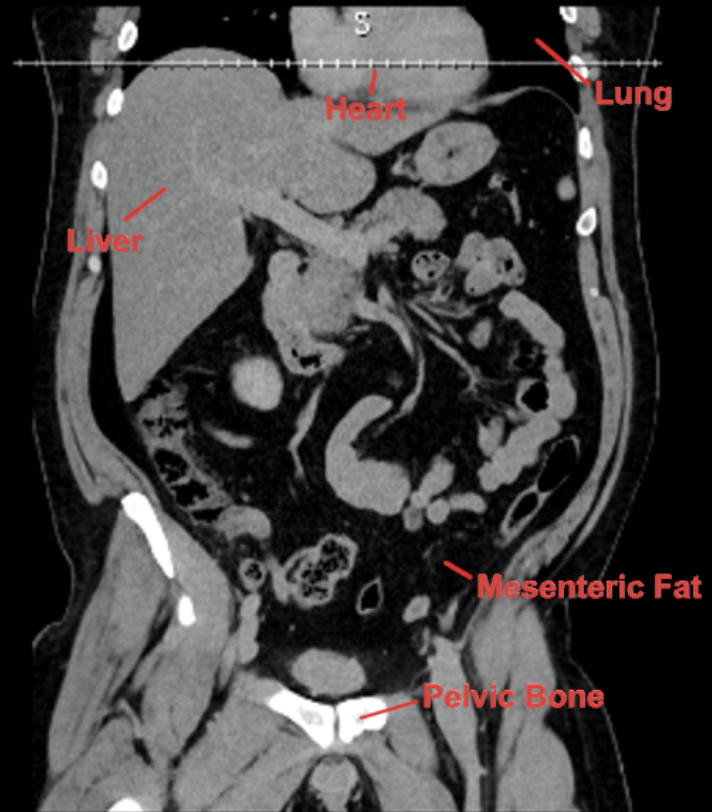
CT can sometimes be difficult and confusing. Thankfully, our expert radiologists at Mediphany can help you understand your CT. If you’d like your images explained to you by an expert in a personalized video report, click here. If you’d like access to videos showing normal CT anatomy to help you continue to learn how to read your own CT, click here.
 (888) 699-2977
(888) 699-2977 

